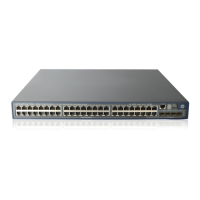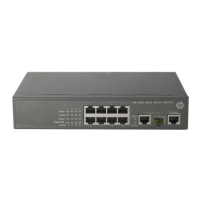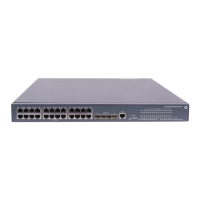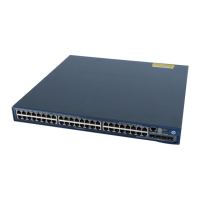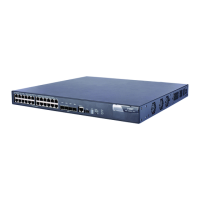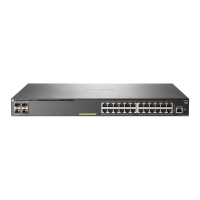192
{ If no receivers for the group exist in the domain, RP 2 neither creates an (S, G) entry nor joins
the SPT rooted at the source.
NOTE:
An MSDP mesh group refers to a group of MSDP peers that have MSDP peerin
relationships amon
one another and share the same group name.
When using MSDP for inter-domain multicasting, once an RP receives information form a multicast
source, it no longer relies on RPs in other PIM-SM domains. The receivers can override the RPs in
other domains and directly join the multicast source-based SPT.
RPF check rules for SA messages
As shown in Figure 56, the autonomous systems AS 1 through AS 5 enable IGP on routers within each
AS and enable BGP or MBGP as the interoperation protocol among them. Each AS contains at least one
PIM-SM domain and each PIM-SM domain contains one ore more RPs. MSDP peering relationships have
been established among different RPs. RP 3, RP 4 and RP 5 are in an MSDP mesh group. On RP 7, RP 6
is configured as its static RPF peer.
NOTE:
If only one MSDP peer exists in a PIM-SM domain, this PIM-SM domain is also called a stub domain.
For example, AS 4 in Figure 56 is a stub
domain. The MSDP peer in a stub domain can have multiple
remote MSDP peers at the same time. You can configure one or more remote MSDP peers as static RPF
peers. When an RP receives an SA message from a static RPF peer, the RP accepts the SA message and
forwards it to other peers without performing an RPF check.
Figure 56 Diagram for RPF check for SA messages
SA message
MSDP peers
AS 1
AS 2
AS 3
AS 4
AS 5
RP 1
RP 2 RP 3
RP 4
RP 5
RP 6 RP 7
RP 8RP 9
Mesh group
Source
(1)
(2)
(3)
(3)
(4)
(7)
(6)
(5)
(4)
Static RPF peers
As shown in Figure 56, these MSDP peers dispose of SA messages according to the following RPF check
rules:
1. When RP 2 receives an SA message from RP 1:
Because the source-side RP address carried in the SA message is the same as the MSDP peer
address, which means that the MSDP peer where the SA is from is the RP that has created the SA
message, RP 2 accepts the SA message and forwards it to its other MSDP peer—RP 3.
2. When RP 3 receives the SA message from RP 2:

